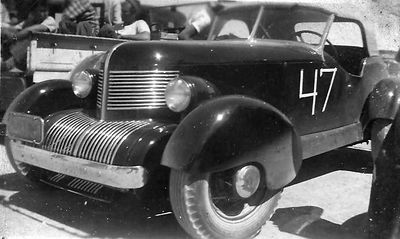The Eugene Von Arx Special
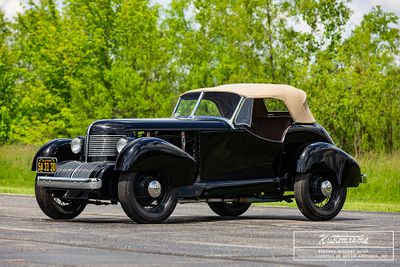
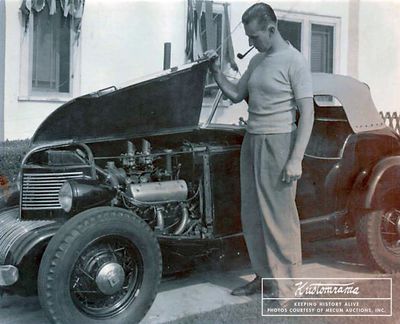
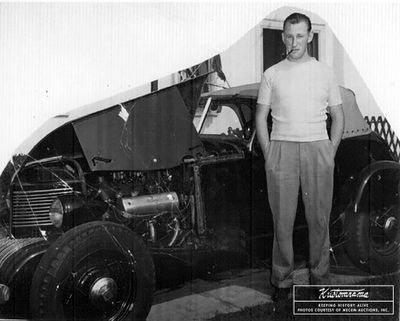
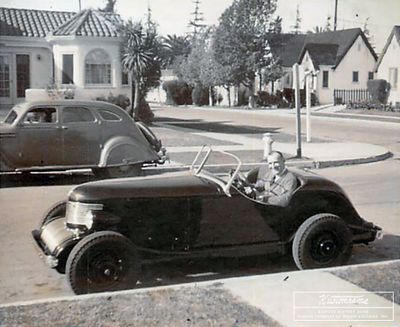
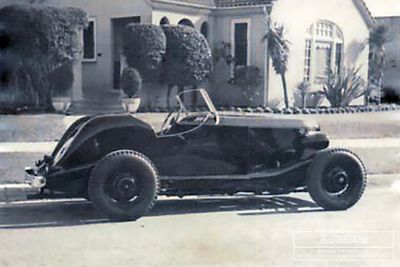

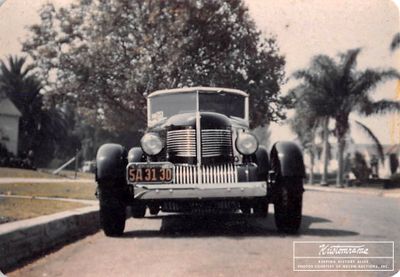
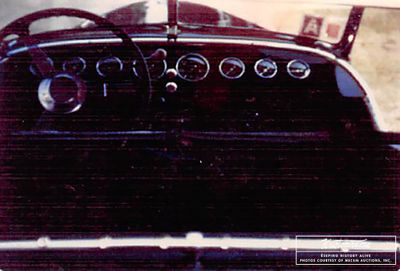
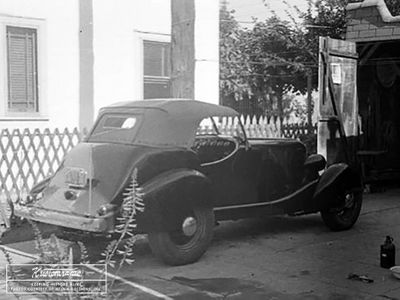
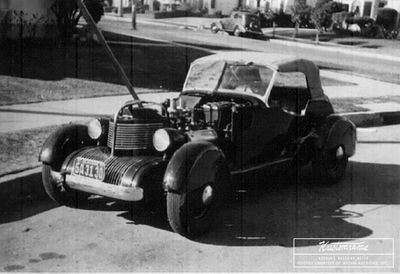
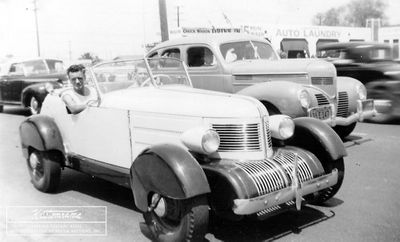
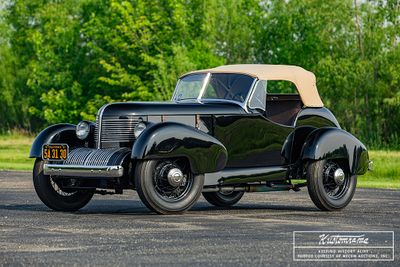
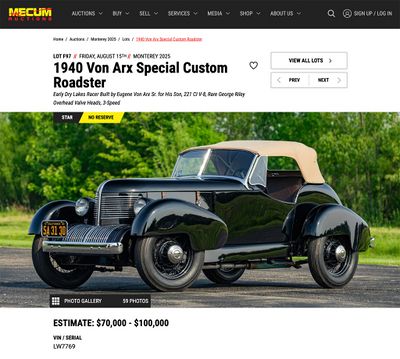
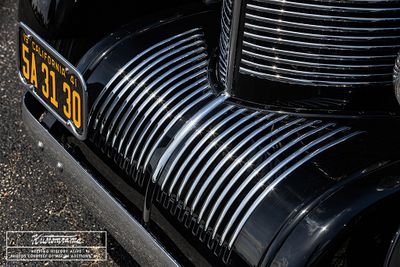
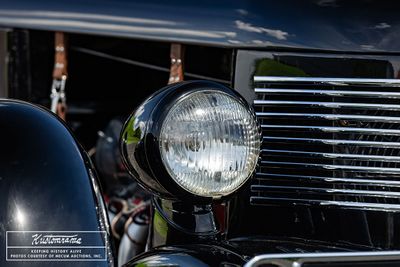
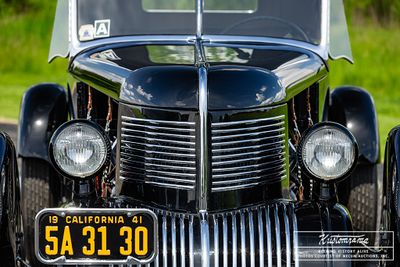
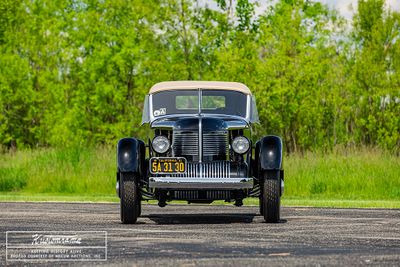

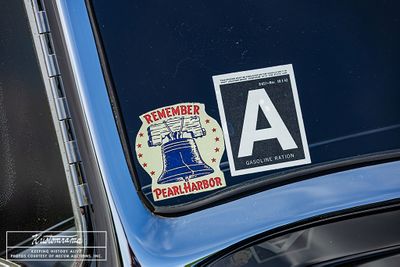
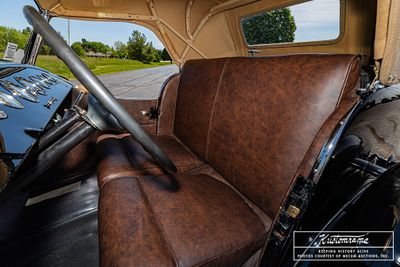
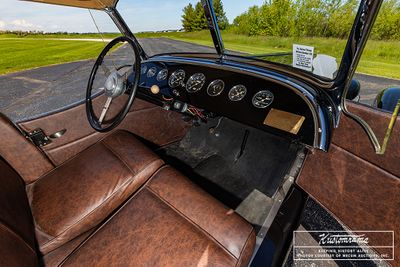

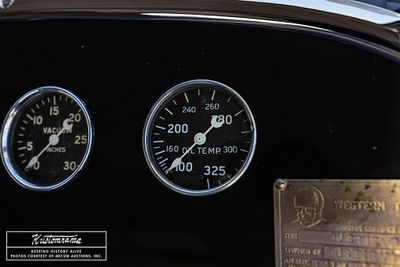
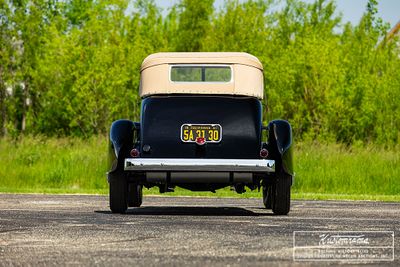
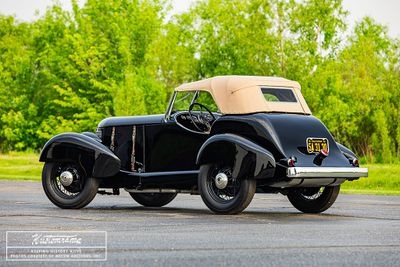
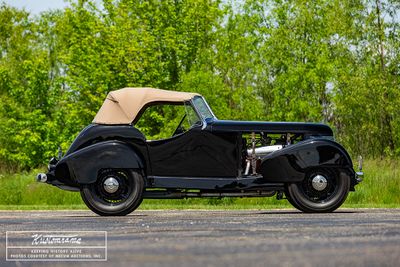

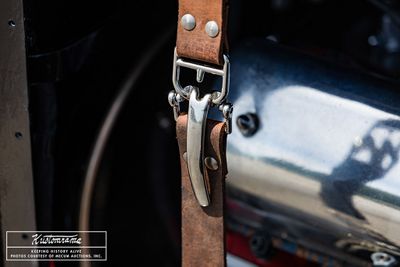

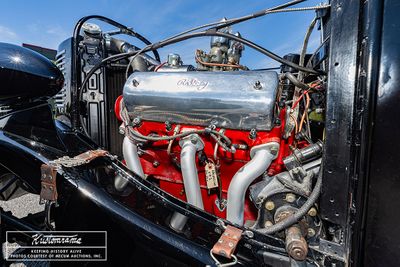
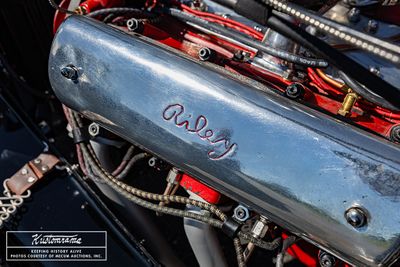
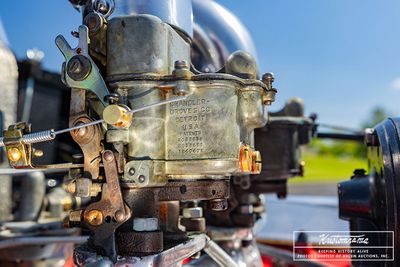
Featured Story - Prewar Custom
The Eugene Von Arx Special is a one-of-a-kind prewar custom roadster built in 1940 in California. A unique fusion of dry lakes performance and classic coachbuilding craftsmanship, the car was created for land speed racing on California’s dry lake beds and stands today as an early example of the creativity and skill that would later define the hot rod and custom car movement.
Contents
The Bungholers of Hollywood
The car was constructed at a time when the popularity of speed trials on dry lake beds such as Muroc, Rosemond, and El Mirage was growing rapidly. In 1937, a group of young enthusiasts formed a club called the Bungholers of Hollywood, a name derived from the tap hole found in a wooden beer keg. One of the founding members of the club was Eugene Von Arx Jr., son of a classically trained coachbuilder.[1]
Coachbuilt by a Master
Eugene Von Arx Sr., Eugene Jr.’s father, was a craftsman who had trained at the prestigious Walter M. Murphy Company in Pasadena and later worked for Don Lee Coach & Body Works in Los Angeles. Don Lee’s custom body operation had previously absorbed Earl Automobile Works, whose founder’s son, Harley Earl, went on to become GM’s first design chief.[2]
With this deep background in coachbuilding, Von Arx Sr. undertook the task of building a completely hand-formed body for his son’s racing car. The streamlined, Art Deco-inspired design featured a one-off front end, unique doors, and specially contoured fenders. The front fenders were mounted to the wheels, and turned when you turned the wheels. 1937 Chevrolet headlights, 1937 Oldsmobile tail lights, and a chromed grille made from half-round naval brass extrusions added to its refined appearance. A split Duvall windshield, black lacquer paint, and a tan soft top completed the body.[2]
A Chassis by Frank Kurtis
The chassis and suspension work was entrusted to Frank Kurtis, a respected race car builder who had also worked for Don Lee. Kurtis fabricated the chassis by combining two 1939 Chevrolet frames and designed a lateral spring-mounted suspension system for high-speed stability.[2]
Riley OHV Flathead Power
Under the hood, the Von Arx Special was powered by a 221 cubic inch 21-stud Ford flathead V-8 engine that was fitted with rare George Riley overhead-valve heads—one of only six known sets, with just four still in existence. The Riley-branded valve covers were a distinguishing feature. The engine also featured a polished intake manifold with twin Chandler-Grove carburetors and a custom underbody exhaust system. Power was delivered through a Ford 3-speed manual transmission, and Chrysler front brakes were installed for stopping power.[2]
Racing History
In order to race on the dry lakes under the SCTA (Southern California Timing Association), membership in a sanctioned car club was required. The Bungholers met that requirement, and the Von Arx Special became an active participant in the prewar dry lakes scene. On May 8, 1942, the car achieved a top speed of 114.4 MPH at El Mirage, running in the overhead-valve class. This performance was likely one of the last officially timed runs before WWII halted all SCTA activity.[2]
Interior and Detailing
The interior featured Lincoln bronze leather upholstery, custom-made door panels, and a full set of original Stewart-Warner gauges mounted in the dash. A Western Timing Association timing tag, large-diameter steering wheel, and a vintage column shifter with a white knob. The car rolled on small-diameter wire wheels with OEM-width treaded tires.[2]
Legacy
Unlike many stripped-down race cars of the era, the Eugene Von Arx Special represented a high level of design and craftsmanship. Built at the dawn of the SCTA’s organized events, it foreshadowed the postwar rise of professionally built hot rods and custom cars. With its blend of speed and elegance, the car stands as an early and important piece of California hot rod history.[2]
Crossing the Block at Monterey 2025
In 2025, the Eugene Von Arx Special is making its return to the spotlight, crossing the block on Friday, August 15th at the Mecum Monterey Auction. A rare survivor from the prewar dry lakes era, and a coachbuilt one at that, it is offered with an estimated sale price between $70,000 and $100,000. This is a rare opportunity to own a historically significant vehicle that helped lay the groundwork for the California hot rod movement.[2]
Unfortunately, not much is known about the car’s history between 1940 and its recent rediscovery. The consigner purchased the Von Arx Special out of Tennessee in a very sorry state and undertook a full restoration to return it to its original specifications. The intervening years remain murky, leaving a mysterious gap in the timeline of this one-off custom.[2]
Click here to view the official auction listing on Mecum.com.
References
Did you enjoy this article?
Kustomrama is an encyclopedia dedicated to preserve, share and protect traditional hot rod and custom car history from all over the world.
- Help us keep history alive. For as little as 2.99 USD a month you can become a monthly supporter. Click here to learn more.
- Subscribe to our free newsletter and receive regular updates and stories from Kustomrama.
- Do you know someone who would enjoy this article? Click here to forward it.
Can you help us make this article better?
Please get in touch with us at mail@kustomrama.com if you have additional information or photos to share about The Eugene Von Arx Special.
This article was made possible by:
SunTec Auto Glass - Auto Glass Services on Vintage and Classic Cars
Finding a replacement windshield, back or side glass can be a difficult task when restoring your vintage or custom classic car. It doesn't have to be though now with auto glass specialist companies like www.suntecautoglass.com. They can source OEM or OEM-equivalent glass for older makes/models; which will ensure a proper fit every time. Check them out for more details!
Do you want to see your company here? Click here for more info about how you can advertise your business on Kustomrama.
